Dive into the world of Rubber Lip Plecos and learn how to care for these charming scaleless fish.
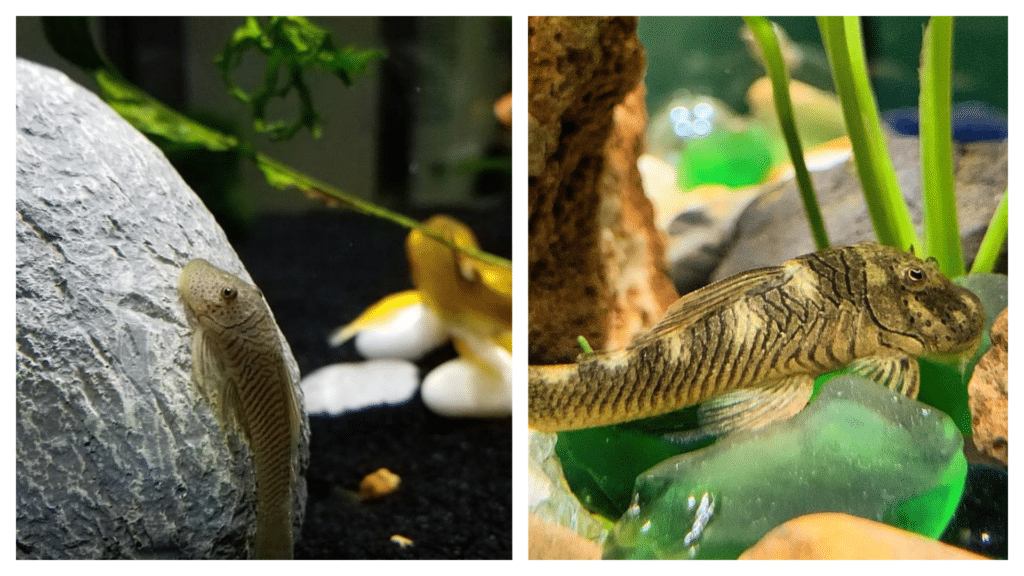
If you’re an enthusiastic aquarist, you’ve likely encountered the captivating Rubber Lip Pleco, scientifically known as Chaetostoma milesi, during your freshwater fishkeeping journey.
These scaleless wonders originate from the pristine waters of South America, particularly Venezuela and Colombia, and have found their way into numerous aquariums worldwide.
This comprehensive guide will delve deeply into the art of caring for Rubber Lip Plecos, exploring every facet, from ideal tank sizes to dietary preferences, behaviour quirks, and more.
The World Bucket List’s top facts about Rubber Lip Plecos:
- Rubber Lip Plecos have a lineage dating back millions of years, making them living fossils with a rich history.
- As the name suggests, these plecos are renowned for their peculiar rubbery lips, which they use to scrape algae off surfaces, making them excellent tank cleaners.
- Rubber Lip Pleco’s are native to the Apure River in Venezuela and the Magdalena River in Colombia. They thrive in the fast-flowing, well-oxygenated waters of South America.
- This fish species is known for their docile temperament. As such, they are excellent companions for a wide range of different community tank mates.
- Due to their lack of scales, Rubber Lip Plecos are more sensitive to water quality, temperature fluctuations, and medications, requiring a well-maintained environment for their health and wellbeing.
Appearance and size – small wonder with striped style
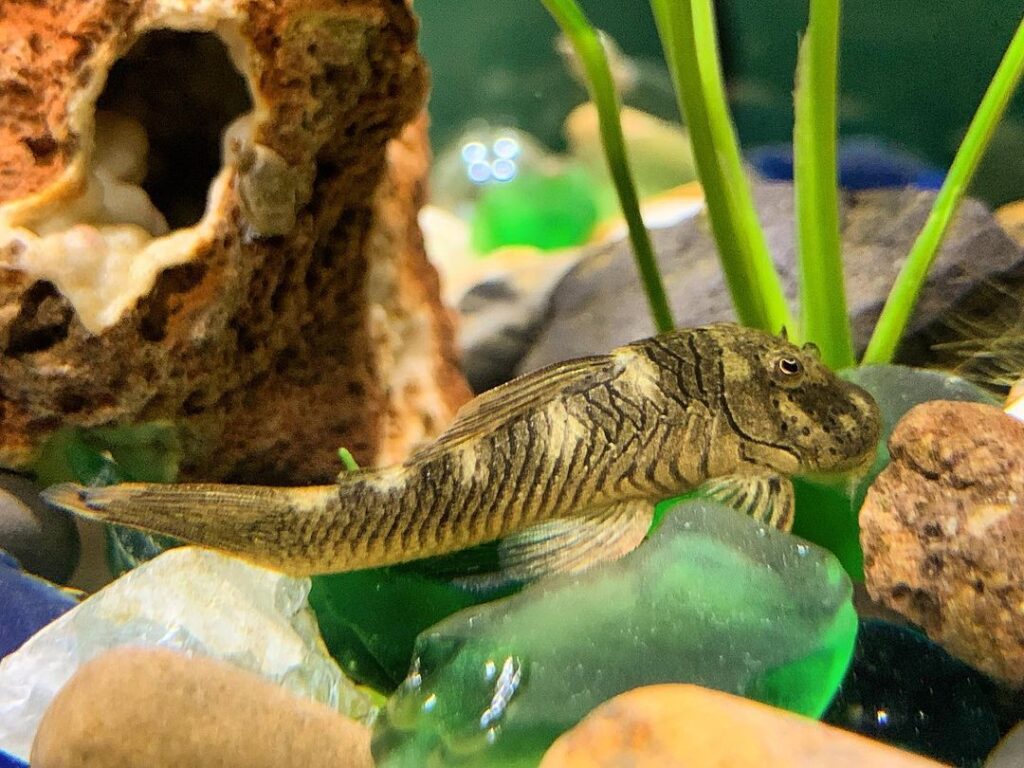
Rubber Lip Plecos are relatively diminutive, with females reaching a modest 4 to 5 inches in length, while their male counterparts tend to be slightly smaller, measuring in at 3 to 4 inches.
Their most distinctive feature is their unique rubbery lips and eye-catching striped patterns that adorn their bodies, making them a visually captivating addition to any aquarium.
Habitat and behaviour – river residents
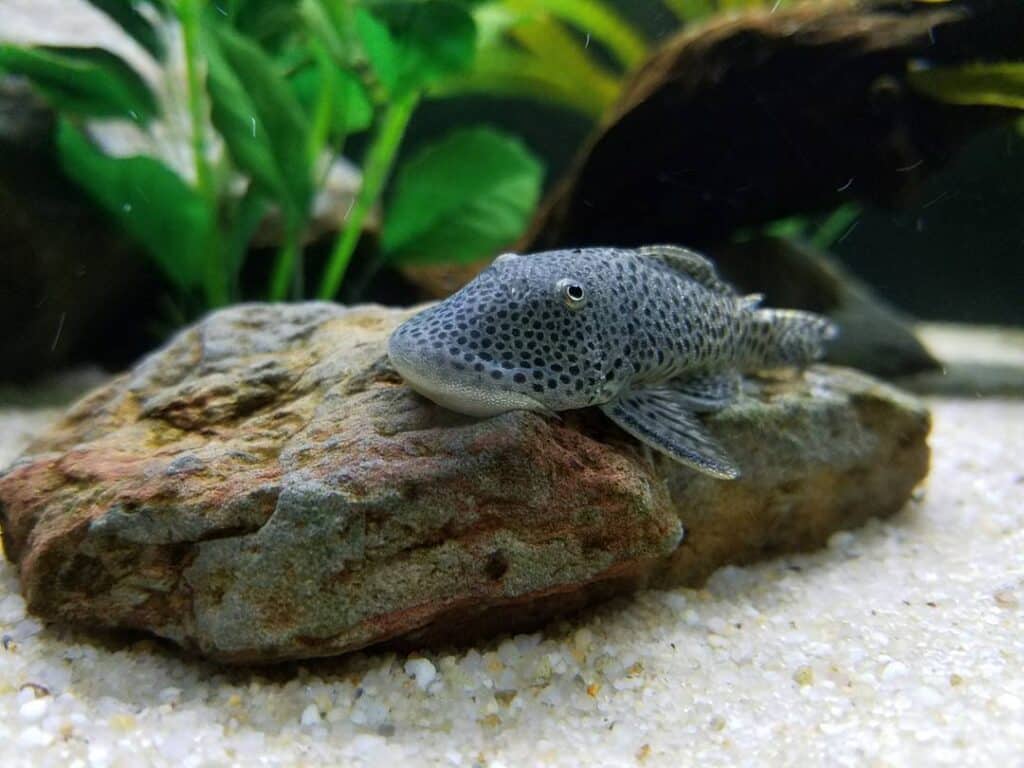
In their natural habitat, which includes the Apure River in Venezuela and the Magdalena River in Colombia, Rubber Lip Plecos thrive in swiftly flowing, well-oxygenated waters generously adorned with aquatic vegetation.
When transitioning them to your home aquarium, it’s vital to recreate these natural conditions, providing ample hiding spots through strategically placed driftwood and rocks.
Rubber Lip Plecos have a reputation for their peaceable disposition and mild temperament, rendering them excellent companions for a variety of other freshwater fish species, such as Neon Tetras and Cory Catfish.
Having said that, you should still exercise caution when considering tank mates, as they may not coexist harmoniously with more aggressive species.
Tank size and water parameters – making the perfect home
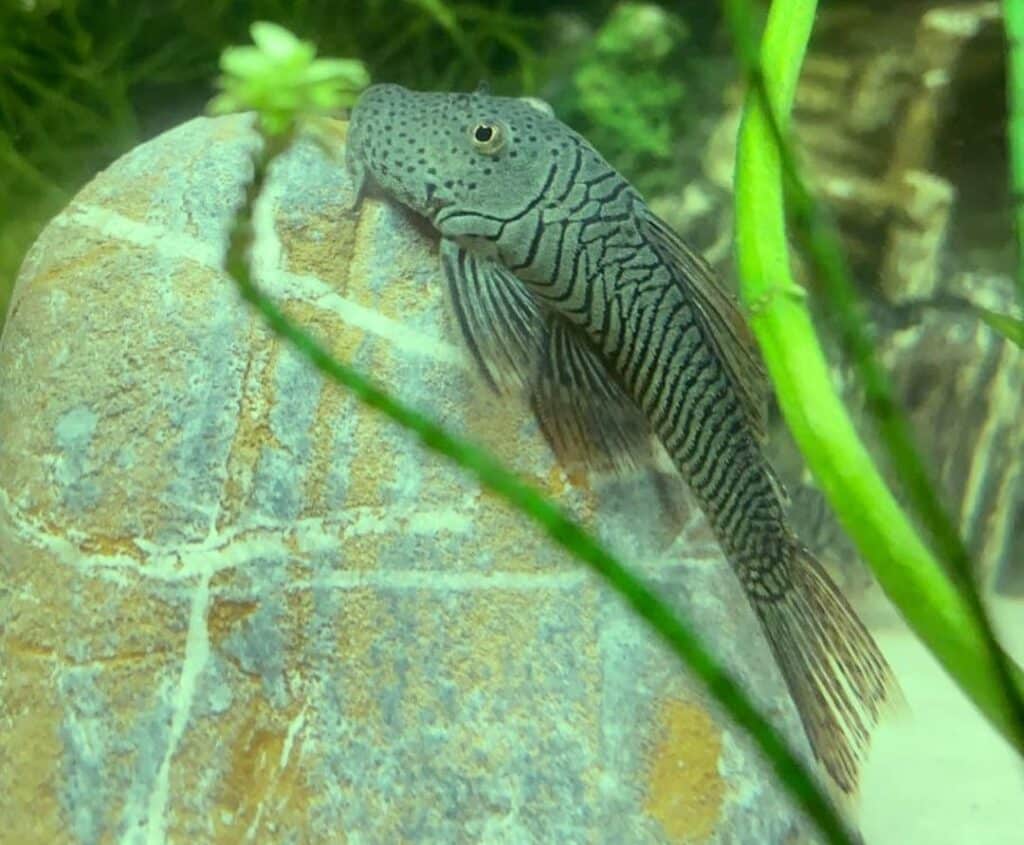
When configuring your Rubber Lip Pleco habitat, it’s advisable to select a tank with a minimum capacity of 20 gallons to ensure ample space for these fish to flourish. Maintaining water conditions within a pH range of 6.5 to 7.5, slightly on the acidic to neutral side, is crucial.
Additionally, maintain water temperatures within the range of 72 F to 78 F (22 C to 26 C) to provide optimal comfort for your Rubber Lip Plecos.
Diet, feeding & breeding – crafting a diverse Pleco diet
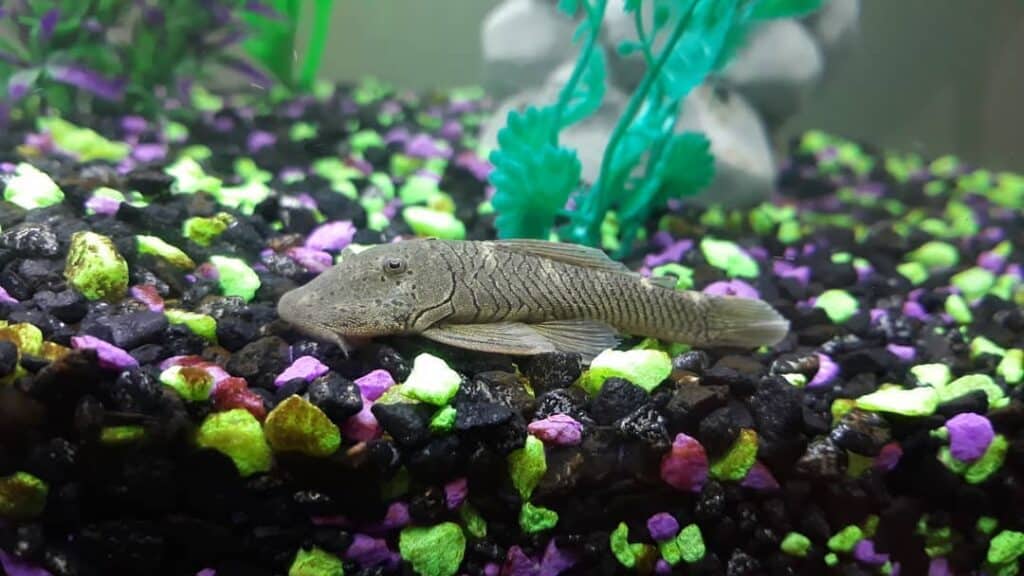
Rubber Lip Plecos are opportunistic omnivores, and their diet reflects this. In their native habitat, they feed on algae, plant matter, and small invertebrates.
It’s best to try and mimic their natural food diet. So, you can offer diverse foods in your aquarium. This includes algae wafers, cucumber slices, zucchini, spinach, and peas. Incorporate high-quality sinking pellets into their feeding regimen to ensure a well-rounded nutritional intake.
Breeding Rubber Lip Plecos can be an incredibly rewarding endeavour for dedicated aquarists. To promote successful breeding, create caves or hiding spots within your tank, utilizing driftwood, rocks, or PVC pipes.
Keep a vigilant eye out for signs of courtship, including males meticulously cleaning surfaces and fiercely guarding their territories. Once eggs are laid, the males dutifully protect them until they hatch.
Common diseases and medications – protecting your Pleco’s wellbeing
Like all fish, Rubber Lip Plecos are susceptible to common diseases such as Ich. Consistently monitor your tank’s water parameters, especially salinity levels, as fluctuations can stress your fish, making them more vulnerable to illness.
Approach the use of medications containing copper with caution, as scaleless fish like Rubber Lip Plecos can be particularly sensitive to it.
Rubber Lip Pleco tank mates – choose friendly neighbours
Rubber Lip Plecos generally coexist harmoniously with other peaceful fish species. Ideal tank mates include Neon Tetras, Cory Catfish, and a wide range of small to medium-sized community fish.
However, exercise discretion when selecting tank mates, as it’s best to avoid housing them with more aggressive species that may engage in fin-nipping behaviour.
Scaleless wonders – elevate your aquatic experience
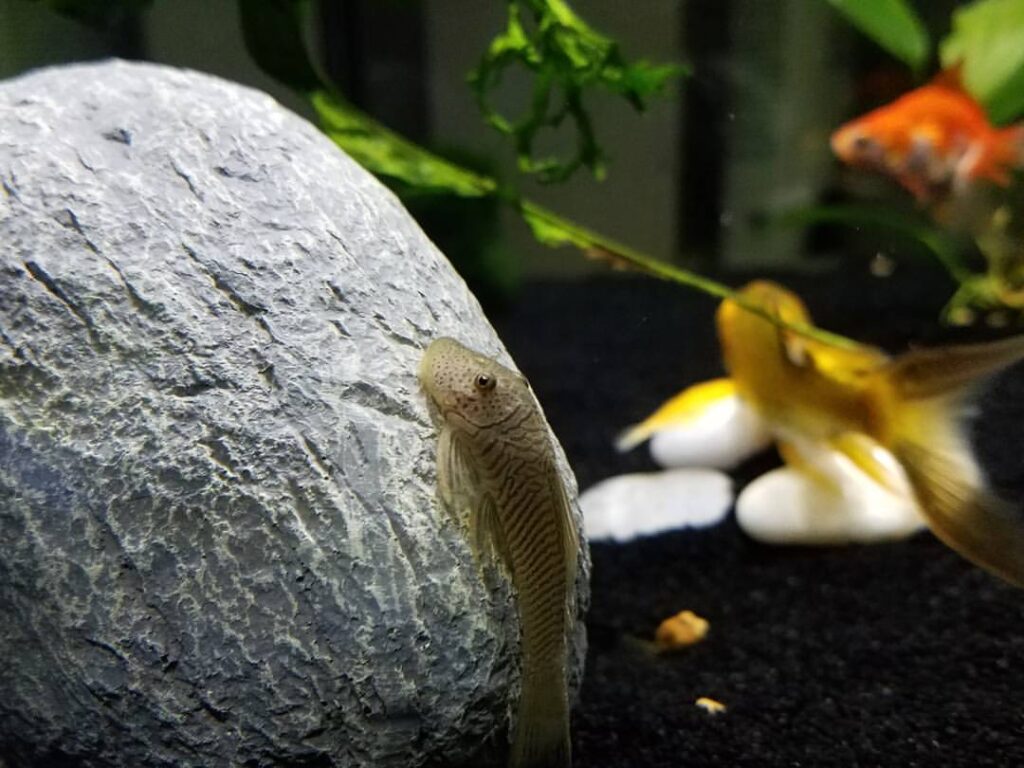
The Rubber Lip Pleco is an enchanting addition to any freshwater aquarium. They bring their distinct appearance, friendly nature, and algae-eating habits to the tank!
All of these features combined have made them a popular choice among fish lovers all over the world.
By providing a meticulously maintained tank, a diverse and well-balanced diet, and compatible tank mates, you can revel in the company of these charismatic scaleless fish for years to come.
It’s important to remember that while keeping Rubber Lip Plecos can be a gratifying experience, it’s a job that requires dedication and a commitment to maintaining optimal water conditions.
With the proper care and environment, your Rubber Lip Plecos will thrive and add elegance and diversity to your aquatic haven.
So, if you’re contemplating adding these delightful “rubbernose” wonders to your collection, go ahead and craft a comfortable, algae-rich sanctuary for them.
Your aquarium will undoubtedly reap the benefits of its presence, and you’ll be rewarded with a thriving aquatic ecosystem teeming with life and vibrancy.
Your questions answered about Rubber Lip Plecos
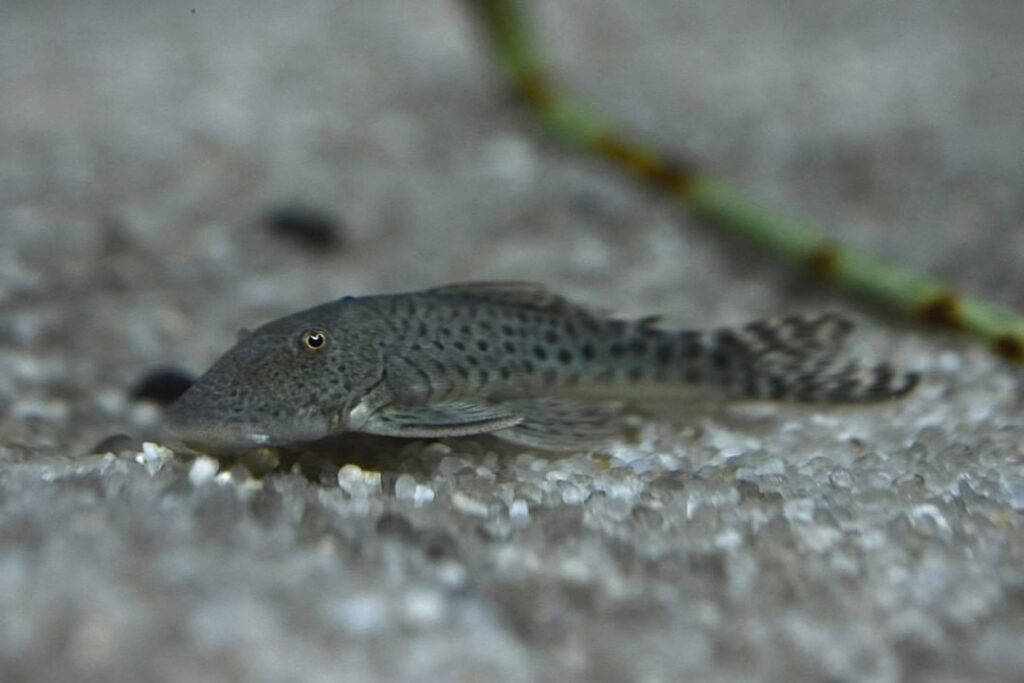
If you’ve still got questions, don’t worry. In this section, we answer some of our readers’ most frequently asked questions.
How big does a rubber lip pleco get?
The average Rubber Lip Pleco typically grows to 3-5 inches, with females generally larger than males.
What is the difference between a rubber lip and a common pleco?
The most noticeable difference between the two is their size. Common Plecos grow much larger than Rubber Lip Plecos, which keep their small size throughout their lifespan.
Can two rubber lip plecos live together?
Yes, two Rubber Lip Plecos can cohabitate as they are generally very peaceful and friendly fish.
How do you care for a rubbernose pleco?
We recommend a tank with proper water parameters, a varied diet, including algae-based foods, and plenty of hiding spots in your tank. For more specific information, see the relevant sections.
RELATED ARTICLES:
Apistogramma care guide: size, diet, lifespan, and MORE unveiled

